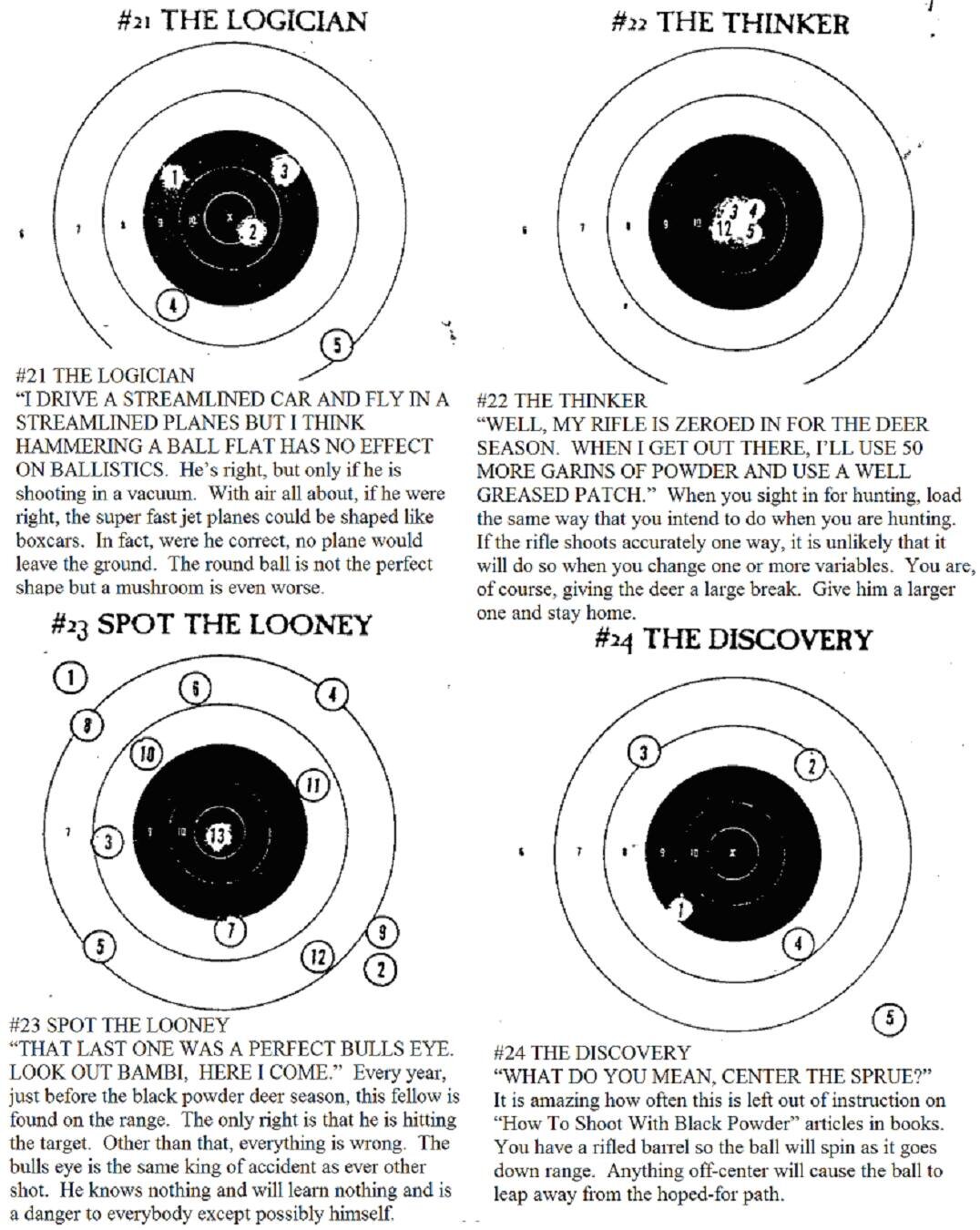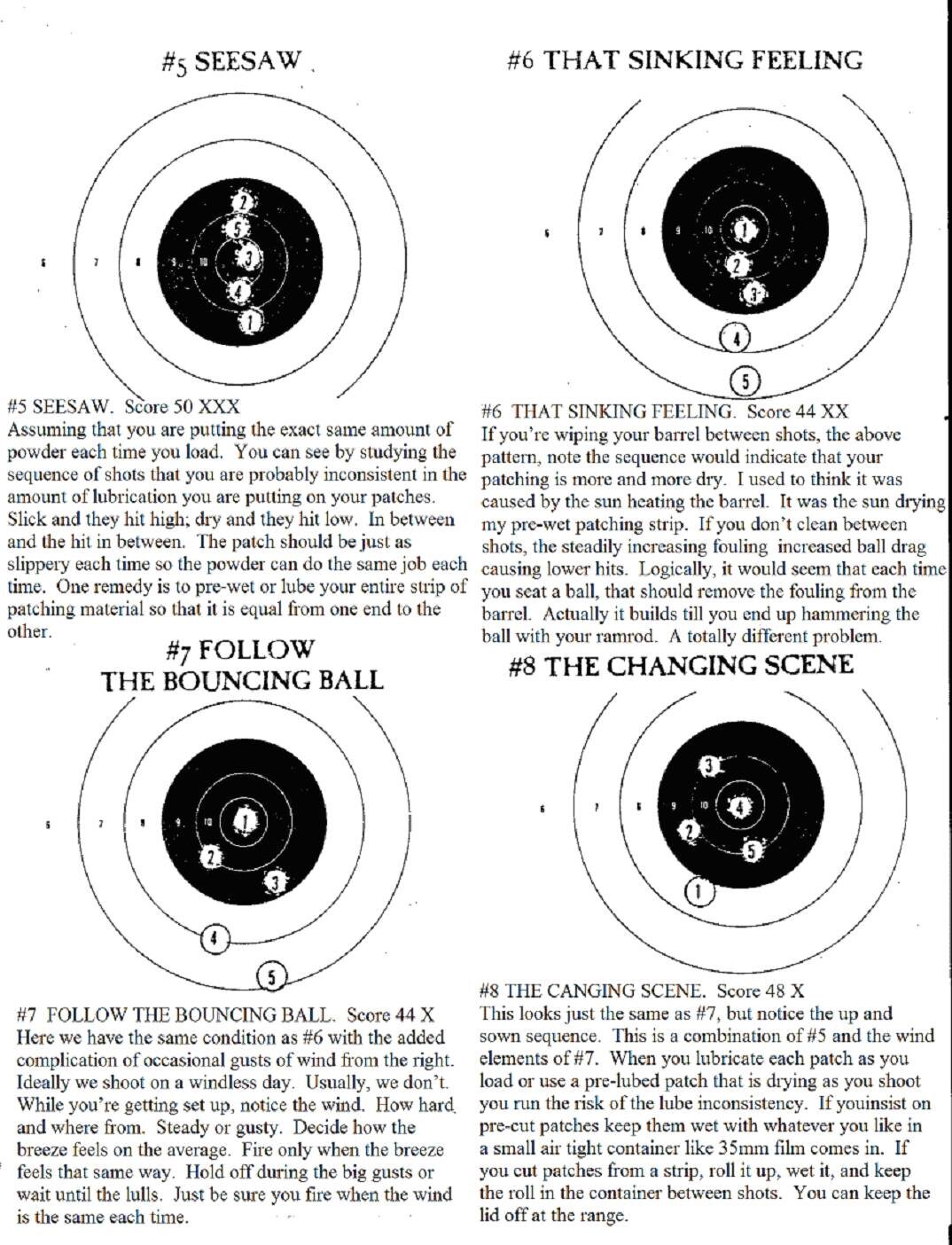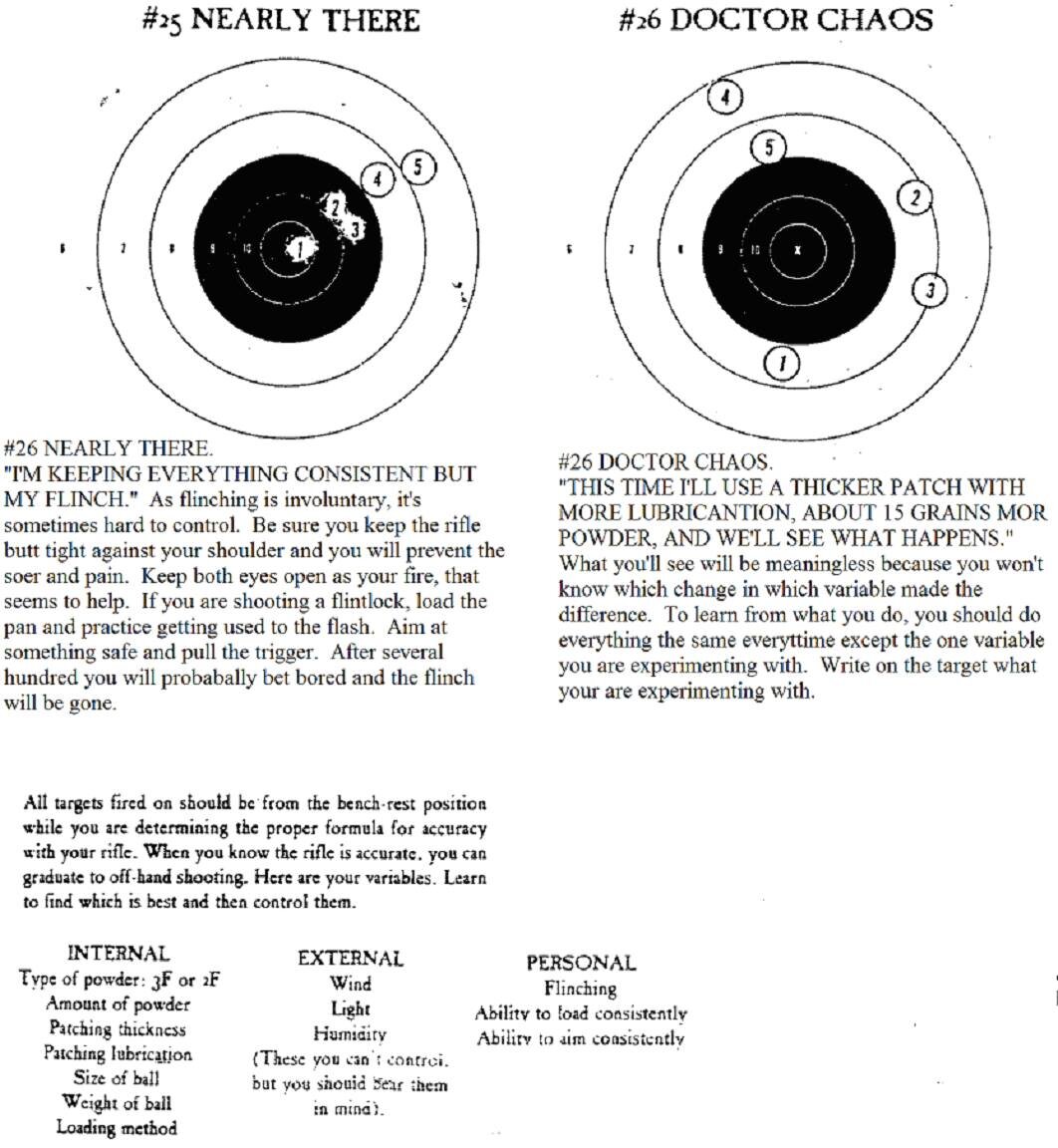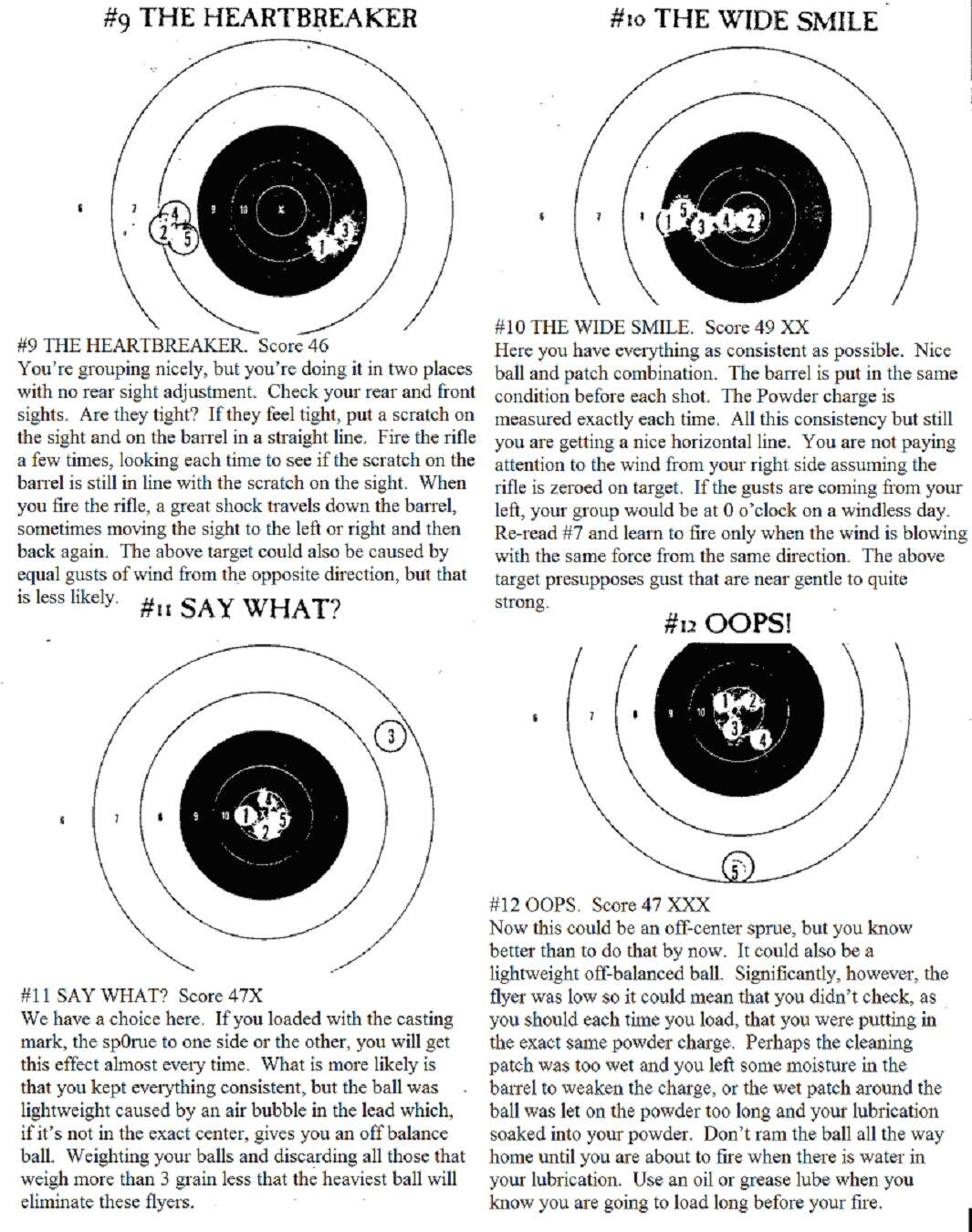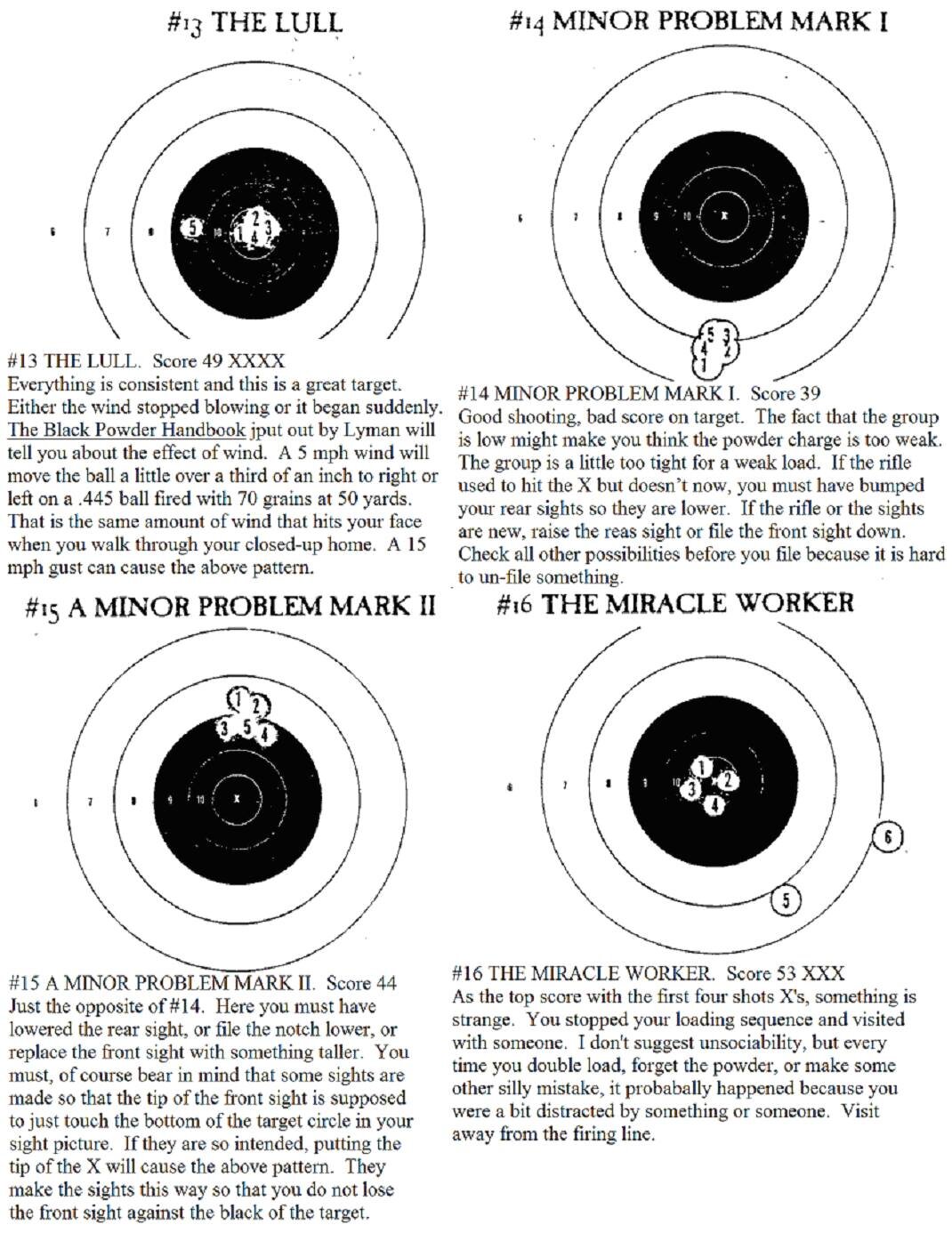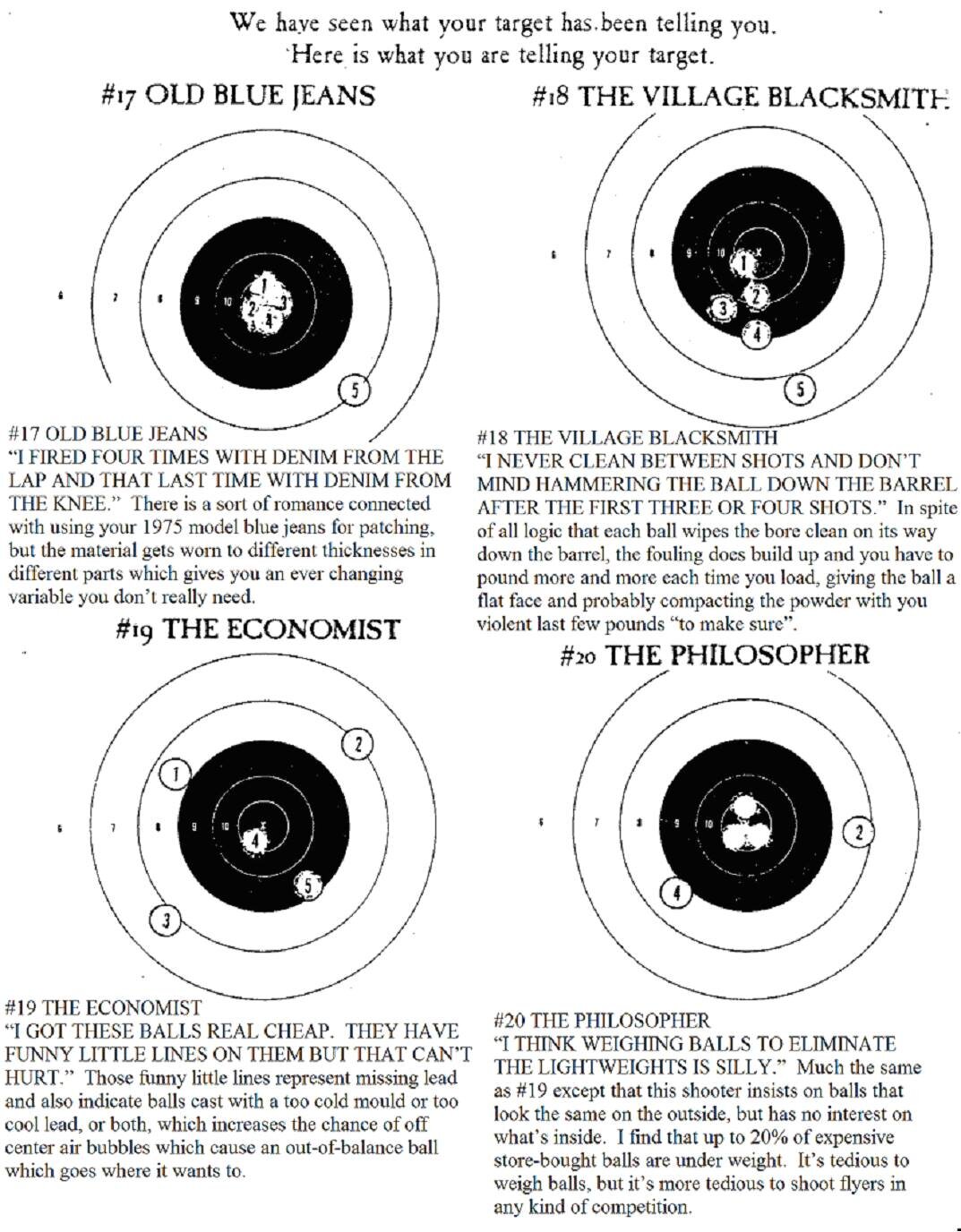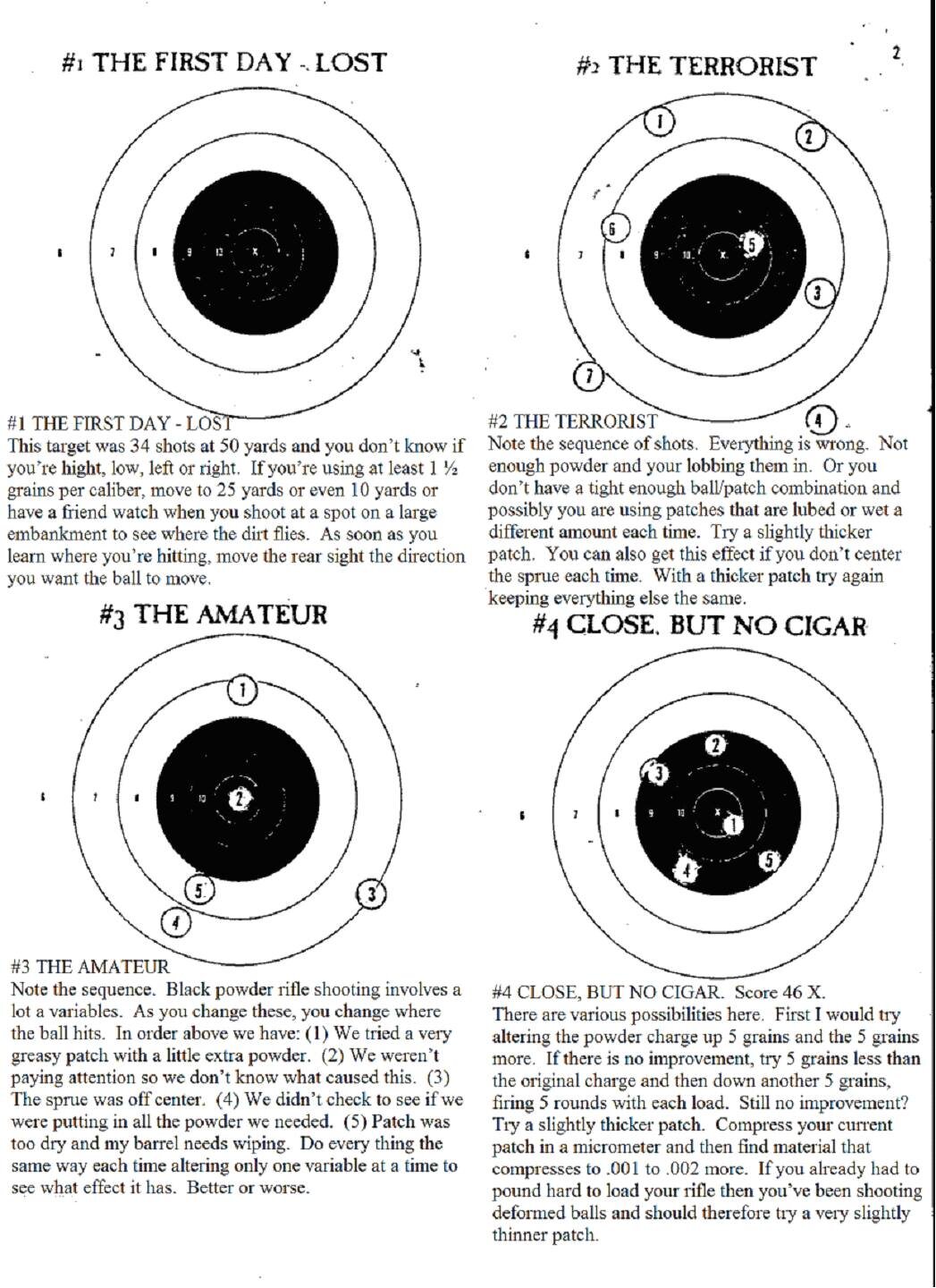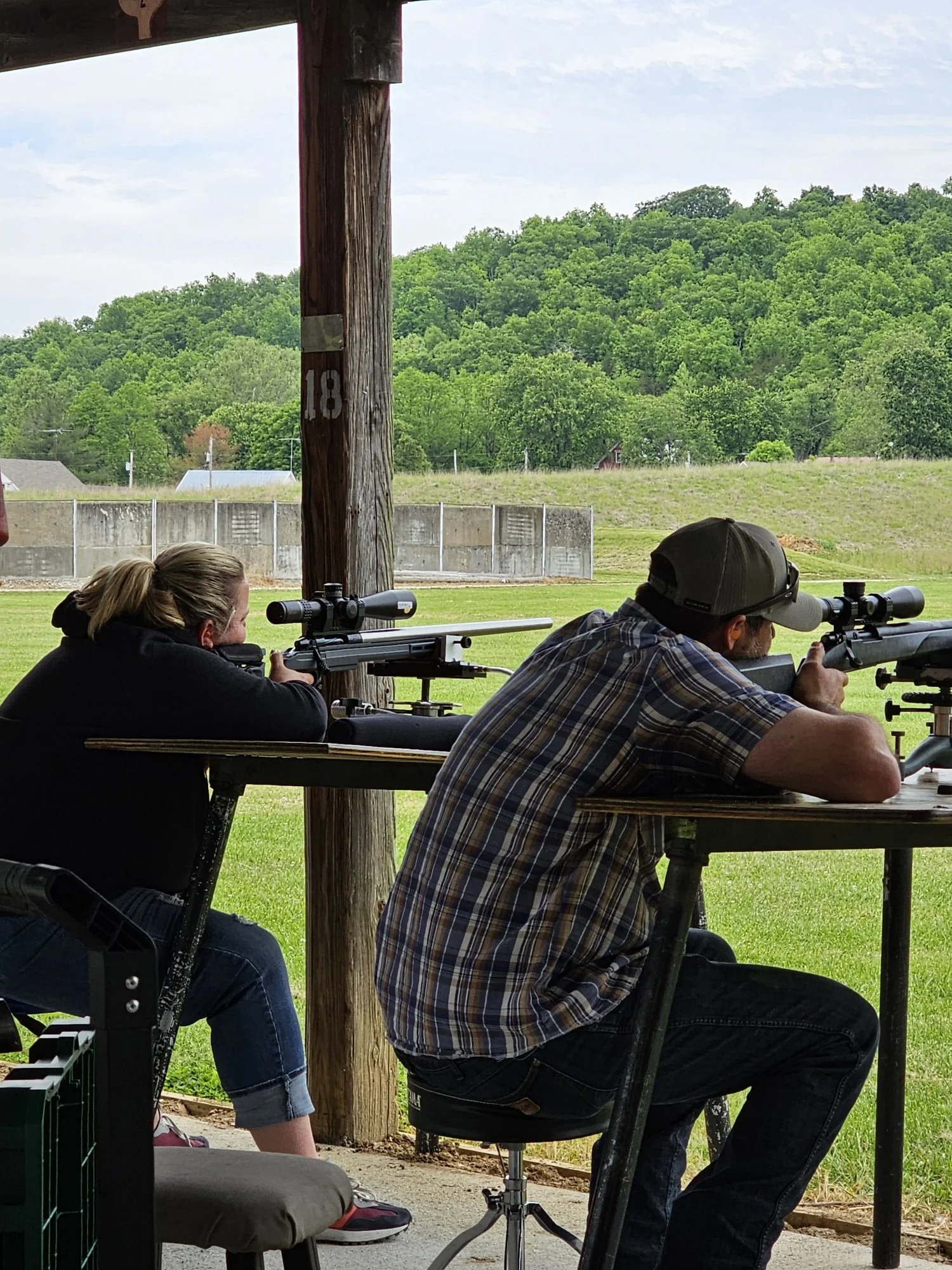Assuming you can aim a rifle with some consistency, should hit what you aim at with the same consistency providing the rifle itself is accurate. Many black powder rifles, regardless of cost or craftsmanship, are quite inaccurate. Not because they are made wrong, but because the owner doesn't know what makes it accurate and therefore experiments in ignorance.
"Every mistake you make shows up on the target," the old timers used to say, and they were right. When a person is doing one thing wrong, you can easily spot it by looking at the target. when he does two or more things wrong the problem gets a little harder. Some mistakes look the same on the target as other mistakes, but if you can learn the orderin which the bullet holes were made, a light sometimes comes on. Sometime,s two different errors have the same effect. Not centering the sprue causes the weight of the lead in the sprue to be off center and the ball spins out of balance and becomes a "flyer".
Using a light weight ball means there is an air bubble inside which makes that side of the ball light and the ball spins out of balance and becomes a "flyer". If you've carefully weighed out all vour balls and elin1inated the light weights, then yow· "flyer" was an off center sprue. If your sprue is centered and you are not using a lightweight, you will have no flyers. I guarantee. You can sometimes get the effect of a "flyer" if you use pre-cut and happen to get one in off center to such a degree that it comes off part way down the barrel, but most people who are "into accuracy" don't use pre-cuts, but cut their patching at the muzzle which gives you a perfect fitting patch every time. light weights, then yow· "flyer" was an off center sprue. If your sprue is centered and you are not using a lightweight, you will have no flyers. I guarantee. You can sometimes get the effect of a "flyer" if you use pre-cut and happen to get one in off center to such a degree that it comes off pa11 way down the barrel, but most people who are "into accuracy" don't use pre-cuts, but cut their patching at the muzzle which gives you a perfect fitting patch eve1y time.
Over six years of figuring out my own stupid mistakes, I have gotten to a point where usually I can tell what a shooter is doing wrong by looking at his target and then listening to his rifle and the watching him load. On the following pages I have the targets I watch for that show a shooting en-or, plus some more that more or less demonstrate the shooter's attitude. These last are the hardest to connect.
If the rifle sounds weak or to loud I ask about his powder charge. If he loads with much pounding or absolutely no pounding II ask about his patching thickness. I like to see a slightly pained expression when they hit their short starter, not great pain, just a slight amount that caused a little wince around the eyes. That usually means the patching is just right.
(Note: When testing the shots should be done off the bench to eliminate the variable of off hand shooting and the dreaded figure eight sight picture)

